Preserved lemons are lacto-fermented in salt and fresh lemon juice. They add an intense lemony flavor, mild tartness to sauces, dressings, and Middle Eastern cuisine.
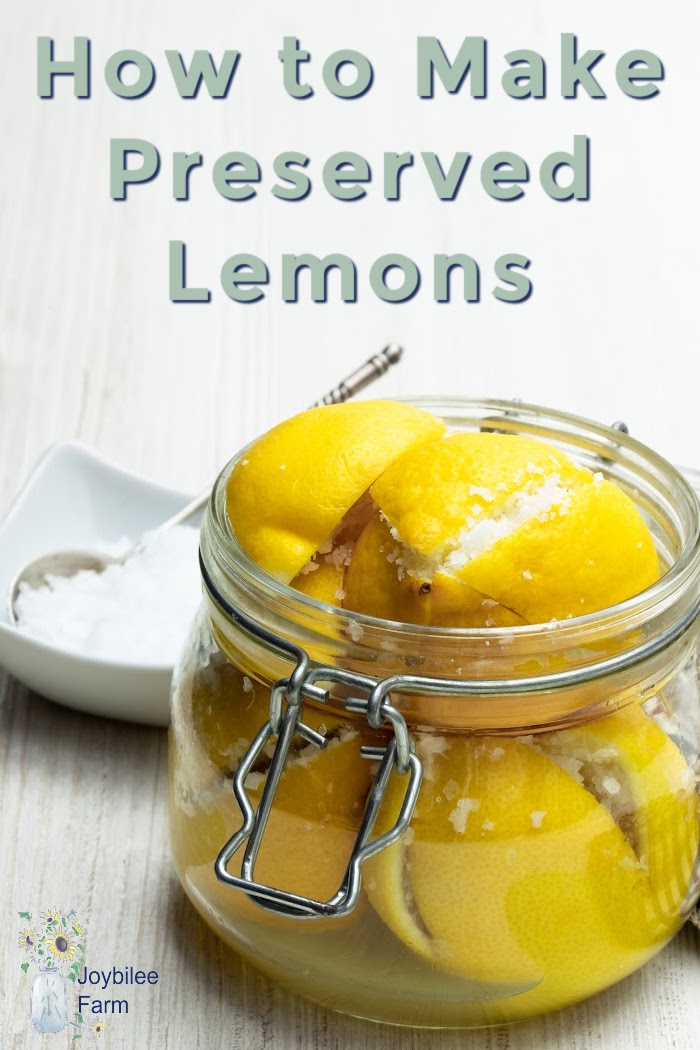
A staple in Middle Eastern cuisine and Moroccan dishes, preserved lemons are easy to make at home. You can make them with just three ingredients: Fresh lemons or lemon rinds, coarse salt, and extra lemon juice or filtered water. Preserved lemons or preserved lemon peel are a flavorful condiment that is delicious with hummus, potatoes, rice, chicken and fish dishes. How much lemon juice you need will depend on the size of the jar you are using for fermentation. When preserving lemons, its important to keep the lemons under the liquid to prevent contact with the air, which can lead to mold. So you’ll want to add enough liquid to keep the lemons submerged below the glass fermentation weight.
Lemons don’t grow easily in zone 3, so I used store-bought lemons or even meyer lemons for this recipe. Even when lemons are in season they are really awful here. By the time they arrive at the market they are bruised, desiccated, and often moldy already. Very often I’ve purchased a bag of organic lemons at over $2 per lb. and had them start to mold within 12 hours of getting them home. Normally out of a bag of 10 lemons I actually get to eat only 3 to 5 and the other 5 succumb to mold and spoilage. It’s disheartening because of how good for you lemons are, and how expensive they are.
People like Angi Schneider of SchneiderPeeps are so blessed to have lemon trees in their backyard. But regardless, if you have a lemon tree make many jars of preserved lemons. If you are like me and have to buy your lemons in the store, do yourself a favour and make at least one jar of preserved lemons, so you can savor the lemony goodness just a little bit longer this year.
What varieties of lemons are best for preserved lemons
Eureka lemons and Meyer lemons are good choices for lemon varieties if you plan to grow your own. Lisbon lemons on the most common grocery store lemon. All varieties of lemons make delicious, tart lemon preserves, but the thinner skins of Meyer lemons makes a sweeter preserved lemon, with less bitter pith.
This recipe for preserved lemons is one of my personal solutions to the terrible state of lemons in Canada. If I make it as soon as I get the lemons home from the market it works. If I wait even overnight, I’m not so successful. The mold contamination happens during shipping and storage and it’s difficult to keep lemons from spoilage once you bring them home.
Because of the prevalent mold issues with lemons, I remove the lemons from their plastic net bags as soon as I get them home. I spritz each lemon with Thieves Vinegar and wipe it with an un-paper towel to dry it before I put them in the fridge or make preserved lemons from them.
Spring lemons are firm and juicy but the late season lemons might not have much juice. You can top up the juice with filtered water or brine when preserving lemons.
Produce wash for non-organic lemons
That procedure is effective if you are using organic lemons, but if you have nonorganic lemons be sure to remove the pesticide residues from the fruit. This solution removes up to 98% of the dirt and pesticides from store bought citrus fruit and other fruits and vegetables. Make a large bowl of warm water. Add 1/4 cup white vinegar or cider vinegar and a squirt of dish soap to the bowl. Place your lemons in the bowl of water and let them sit for 15 minutes. Stir them around in the bowl so that all sides of the lemons make contact with the water. You’ll notice that the water gets mirky quickly. That’s the dirt and chemicals washing off the lemons. Rinse the lemons well under running water. Dry them with a towel. Then proceed with the recipe.
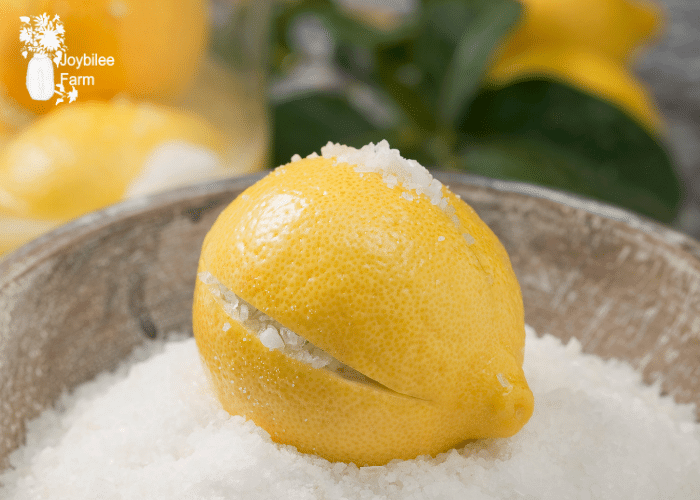
How to make preserved lemons
Preserved lemons are lacto-fermented in salt and lemon juice. They offer an intense lemony flavour and mild tartness to sauces, dressings, and Middle Eastern cuisine. I’ve had them served as a pickle. I’ve roasted them inside and outside a chicken for a savory, lemony chicken. You can blend them and add them to salad dressings and sauces for intense lemon flavour. Or you can just enjoy looking at the bright colours inside the jars, beside the sauerkraut and kosher dills in your fridge.
It takes only a few minutes to make a jar of preserved lemons. You’ll enjoy them year-round.
Tools you’ll need:
The tools you need for making preserved lemons are the same tools you’ll use for all your lacto-fermented vegetables, so invest in good quality tools so that you will have fewer failures.
- A 2 quart sterilized glass jar
- A fermentation airlock like this one
- A band for the jar, like this one
- A glass “weight” that fits the shoulder of the jar (I like these ones because they have a handle to make it easier to place them in the jar and remove them.)
- Sharp knife to cut lemons
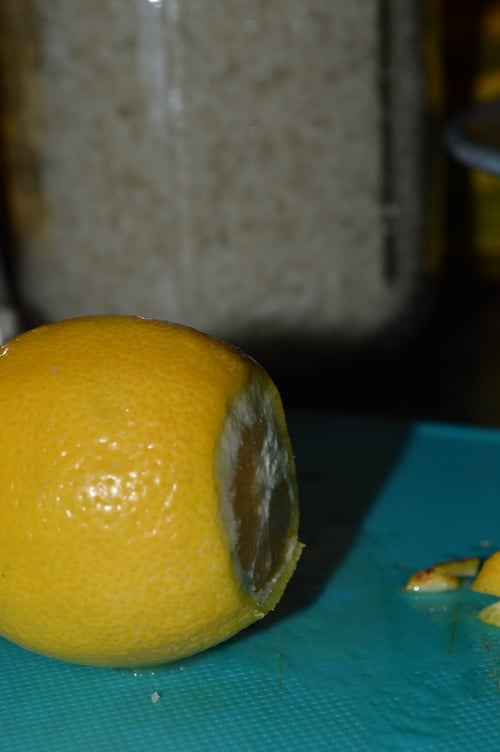
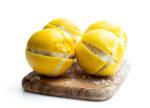
Preserved Lemons
- Prep Time: 20 minutes
- Total Time: 20 minutes
- Yield: 2 quarts 1x
- Category: Lacto-fermentation
- Cuisine: Moroccan
Description
Lacto-fermented, salt preserved lemons add a bright flavor to meals, like hummus, chicken, fish, and rice dishes.
Ingredients
- 3 to 5 pounds of organic lemons
- 1 cup of coarse Himalayan salt or kosher salt
Instructions
- Wash each lemon and remove the stem end. Slit the first lemon in quarters or sixths without cutting all the way through the lemon. The lemon will open like a flower. Sprinkle 1 teaspoon of salt inside the quartered lemon, close up the “petals” and place them into the jar. Continue cutting each lemon in the same way and sprinkle each lemon with 1 tsp of salt per small lemon or 1 tbsp of salt per large lemon. Place each lemon in turn into the jar, until the jar is full to the shoulders.
- Add your glass weight to the jar, over top of the lemons. Press down on the weight to release the lemon juice from the lemons. Place a lid on the jar. Allow the lemons to sit for 4 to 6 hours while the juices are extracted from the lemons by the salt. You should end up with two to four inches of lemon juice in the bottom of the jar.
- Remove the lid after 4 to 6 hours. Press down on the weight to get the juice to rise above the weight in the jar. If necessary add filtered water or freshly squeezed lemon juice to the jar to top up the liquid and bring it above the weight in the jar. Replace the lid. Allow it to sit at room temperature for 4 to 8 days. If necessary top up the jar with more fresh lemon juice or filtered water, to keep the liquid level over the glass weight and prevent air pockets in the ferment. Don’t use treated tap water in fermentation, because the chemicals will impede the natural fermentation process.
- After 24 to 48 hours the jar will start to bubble. Once or twice a day push the lemons down under the weight, if needed, keeping brine over the weight. The jar will bubble for 6 to 8 days and then the activity in the jar will slow down. Once the active bubbling stops, remove the fermentation airlock and ring and replace it with a normal jar lid. Refrigerate the preserved lemons. Keep them for at least a month before you start to use them. The tartness will become milder and the lemon flavour will intensify as the lemons are preserved through lacto-fermentation.
Ingredients:
- 3 – 5 lbs of organic lemons
- 1 cup Coarse Himalayan salt or kosher salt
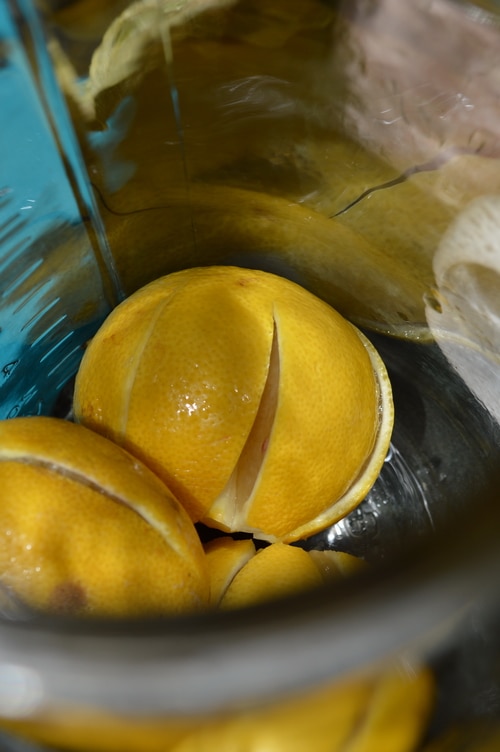
- Wash each lemon and remove the stem end. Slit the first lemon in quarters or sixths without cutting all the way through the lemon. The lemon will open like a flower. Sprinkle 1 teaspoon of salt inside the quartered lemon, close up the “petals” and place them into the jar. Continue cutting each lemon in the same way and sprinkle each lemon with 1 tsp of salt per small lemon or 1 tbsp of salt per large lemon. Place each lemon in turn into the jar, until the jar is full to the shoulders.
- Add your glass weight to the jar, over top of the lemons. Press down on the weight to release the lemon juice from the lemons. Place a lid on the jar. Allow the lemons to sit for 4 to 6 hours while the juices are extracted from the lemons by the salt. You should end up with two to four inches of lemon juice in the bottom of the jar.
- Remove the lid after 4 to 6 hours. Press down on the weight to get the juice to rise above the weight in the jar. If necessary add filtered water or freshly squeezed lemon juice to the jar to top up the liquid and bring it above the weight in the jar. Replace the lid. Allow it to sit at room temperature for 4 to 8 days. If necessary top up the jar with more fresh lemon juice or filtered water, to keep the liquid level over the glass weight and prevent air pockets in the ferment. Don’t use treated tap water in fermentation, because the chemicals will impede the natural fermentation process.
- After 24 to 48 hours the jar will start to bubble. Once or twice a day push the lemons down under the weight, if needed, keeping brine over the weight. The jar will bubble for 6 to 8 days and then the activity in the jar will slow down. Once the active bubbling stops, remove the fermentation airlock and ring and replace it with a normal jar lid. Refrigerate the preserved lemons. Keep them for at least a month before you start to use them. The tartness will become milder and the lemon flavour will intensify as the lemons are preserved through lacto-fermentation.
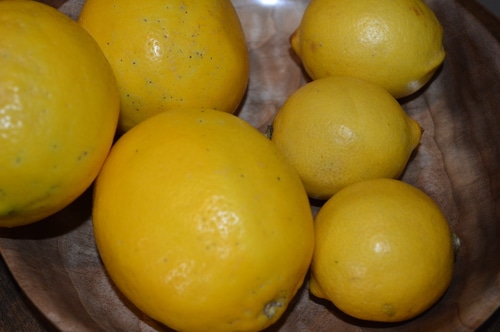
How to use fermented lemons:
- Use them to add flavour to salad dressings or sauces. The brine is intensely lemon flavoured as well as the lemons themselves, so use the lemony brine, too.
- Chop a preserved lemon and add it, along with a sprig of rosemary, parsley, red pepper flakes, and 4 garlic cloves, to the inside of a whole chicken before you roast it.
- In a blender or food processor add a preserved lemon, 3 tablespoons sesame oil, 1 teaspoon soy sauce, 2 garlic cloves and a 1 inch piece of ginger and puree. Mix with 1 tsp of honey and use as a glaze for meat, fish, or poultry.
- Serve them in wedges as pickles.
- Use the juice of a successful batch of preserved lemons to inoculate your next batch of fermented vegetables.
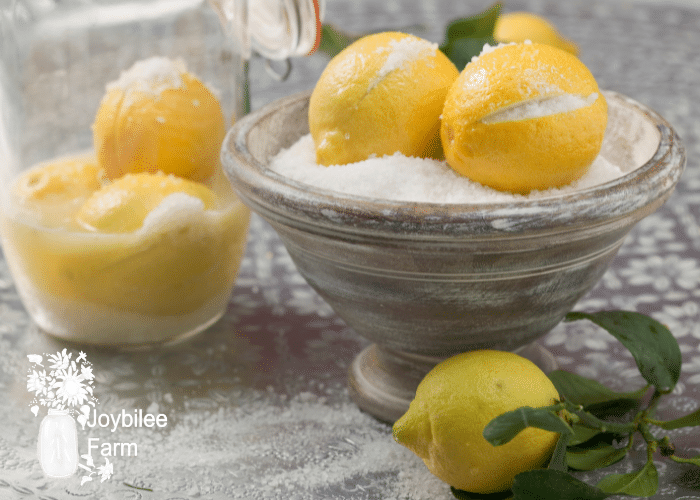
Learn to grow a lemon tree from a lemon seed
While you are working with those lemons don’t toss the seeds that fall from the fruit. Rinse them off and plant them. They’ll germinate and grow into a lemon tree. It takes 4 to 5 years for a lemon tree grown from seed to flower and produce fruit. Tap this link to learn how to get started.


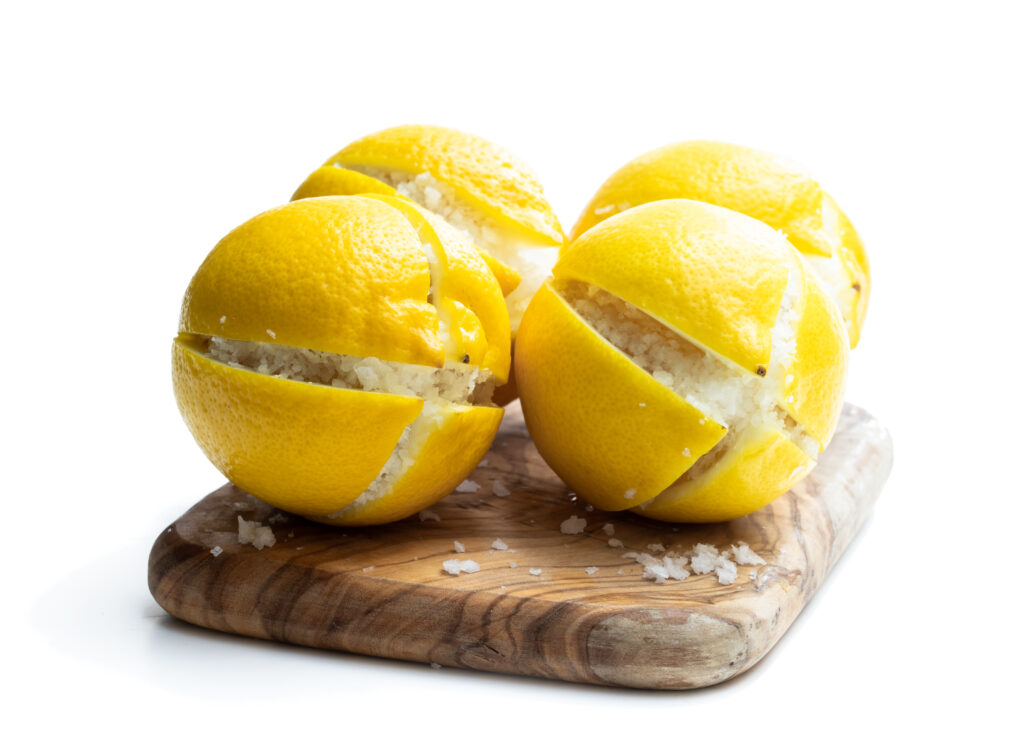

The picture shows a flip top jar. But you said put them in a mason jar to ferment. Do you put them in another jar to store them. They look wonderful. I will definitely try this recipe . Thanks.